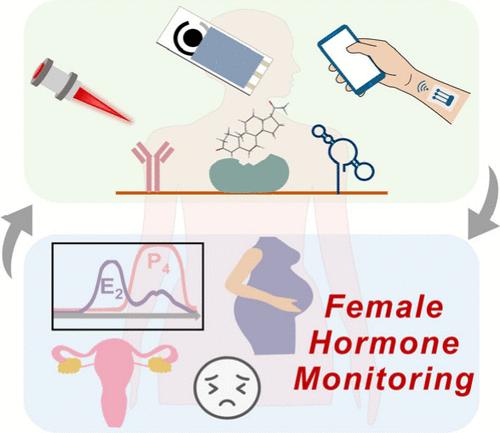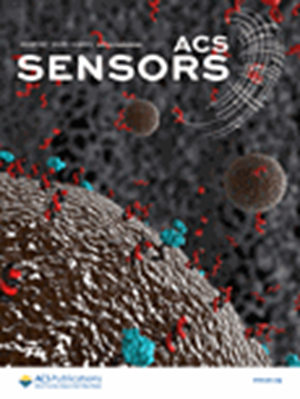Toward At-Home and Wearable Monitoring of Female Hormones: Emerging Nanotechnologies and Clinical Prospects
IF 8.2
1区 化学
Q1 CHEMISTRY, ANALYTICAL
引用次数: 0
Abstract
Steroid hormones, especially progesterone (P4), estradiol (E2), and testosterone (T), are key bioactive regulators in various female physiological processes, including growth and development, ovulation, and the reproductive cycle, as well as metabolism and mental health. As lipophilic molecules produced in sex glands, these steroid female hormones can be transported through blood vessels into various body fluids such as saliva, sweat, and urine. However, the ultralow concentration of steroid hormones down to picomolar (pM) level necessitates great demands for ultrasensitive but low-cost analytic tools to implement accurate, point-of-care or even continuous monitoring in a user-friendly fashion. This review focuses on the latest advances in materials and nanotechnologies to allow the rapid detection of female hormones at the pM level or below and the potentials in at-home and wearable hormone monitoring. We specifically summarize the optical and electrochemical strategies in this category, particularly those affording low cost and portable signal readout for at-home use. Furthermore, emerging flexible/wearable innovations are highlighted, which allow the continuous hormone cycle tracking in a noninvasive manner. The potential of these techniques is discussed to address the need for real-time acquisition of the hormone fluctuation, facilitating health monitoring at home. Lastly, we provide a comprehensive introduction to the prospects of female hormone monitoring in clinical diagnosis and treatment, from the perspective of gynecology and reproductive medicine clinicians.

在家和穿戴式女性激素监测:新兴纳米技术和临床前景
甾体激素,尤其是黄体酮(P4)、雌二醇(E2)和睾酮(T),是多种女性生理过程中关键的生物活性调节剂,包括生长发育、排卵、生殖周期以及代谢和心理健康。作为在性腺中产生的亲脂分子,这些类固醇雌性激素可以通过血管运输到各种体液中,如唾液、汗液和尿液。然而,低至皮摩尔(pM)水平的类固醇激素的超低浓度要求对超灵敏但低成本的分析工具有很大的需求,以便以用户友好的方式实现准确,即时护理甚至连续监测。本文综述了快速检测pM或pM以下女性激素的材料和纳米技术的最新进展,以及在家庭和穿戴式激素监测中的潜力。我们特别总结了这一类中的光学和电化学策略,特别是那些提供低成本和便携式家庭使用的信号读出器。此外,还强调了新兴的柔性/可穿戴创新,这些创新允许以无创方式连续跟踪激素周期。讨论了这些技术的潜力,以解决实时获取激素波动的需求,促进家庭健康监测。最后,我们从妇科和生殖医学临床医生的角度,全面介绍了女性激素监测在临床诊断和治疗中的前景。
本文章由计算机程序翻译,如有差异,请以英文原文为准。
求助全文
约1分钟内获得全文
求助全文
来源期刊

ACS Sensors
Chemical Engineering-Bioengineering
CiteScore
14.50
自引率
3.40%
发文量
372
期刊介绍:
ACS Sensors is a peer-reviewed research journal that focuses on the dissemination of new and original knowledge in the field of sensor science, particularly those that selectively sense chemical or biological species or processes. The journal covers a broad range of topics, including but not limited to biosensors, chemical sensors, gas sensors, intracellular sensors, single molecule sensors, cell chips, and microfluidic devices. It aims to publish articles that address conceptual advances in sensing technology applicable to various types of analytes or application papers that report on the use of existing sensing concepts in new ways or for new analytes.
 求助内容:
求助内容: 应助结果提醒方式:
应助结果提醒方式:


